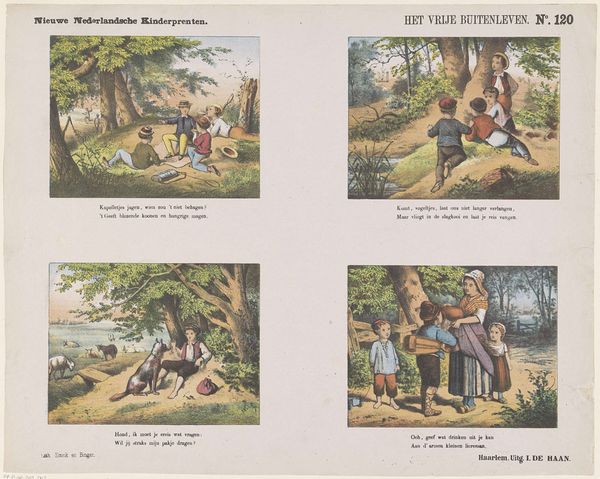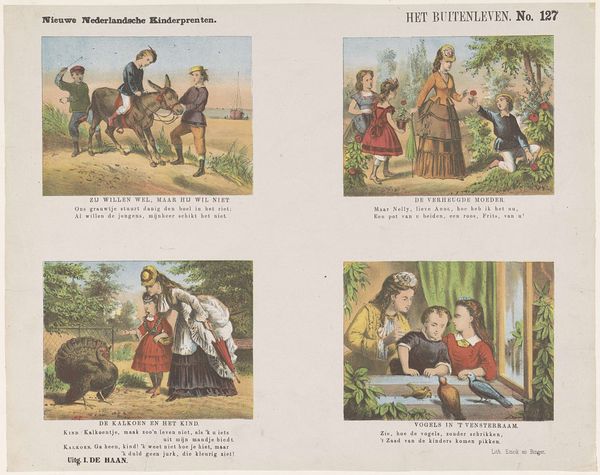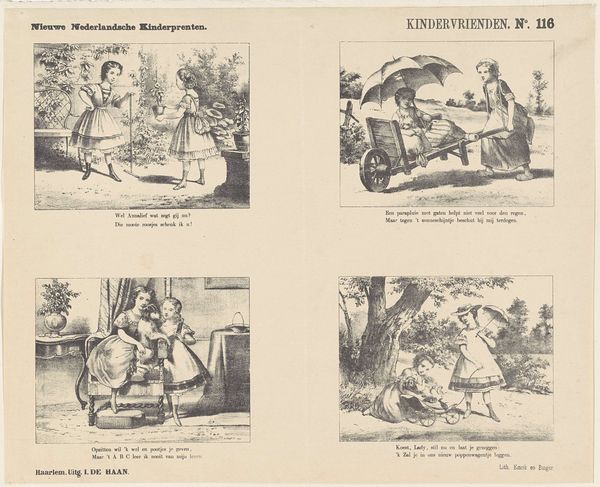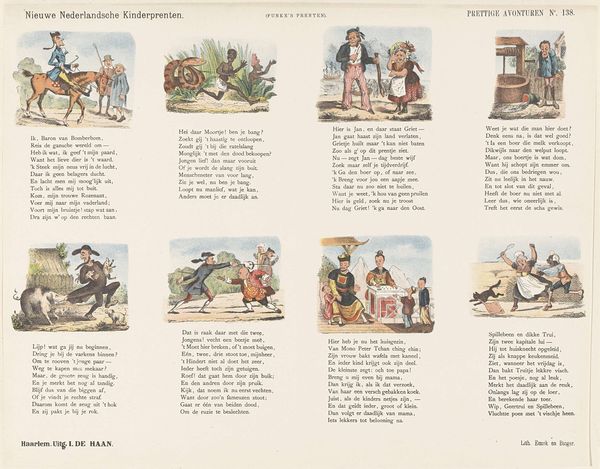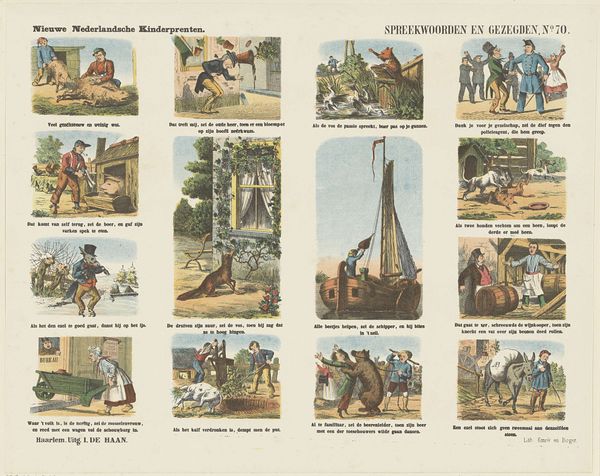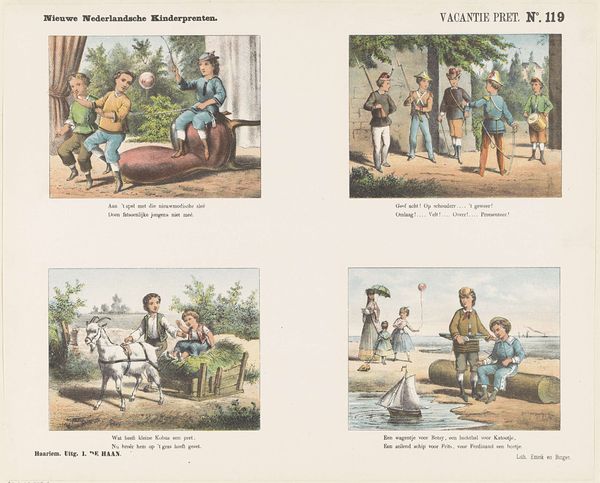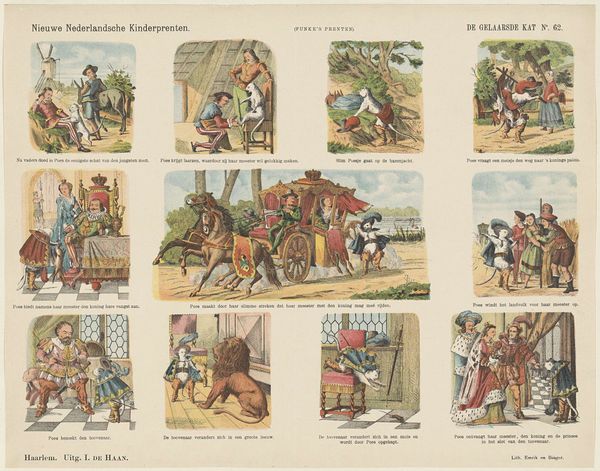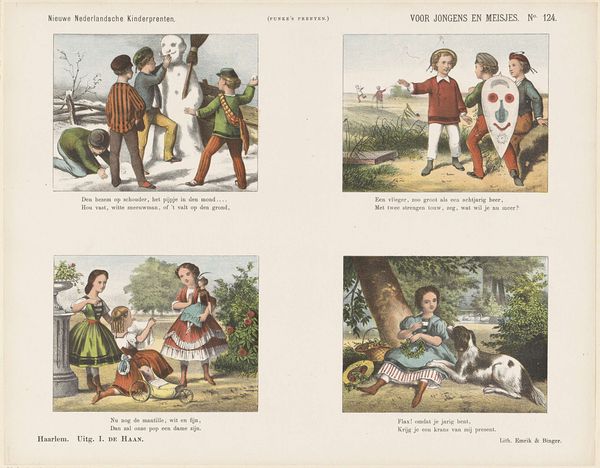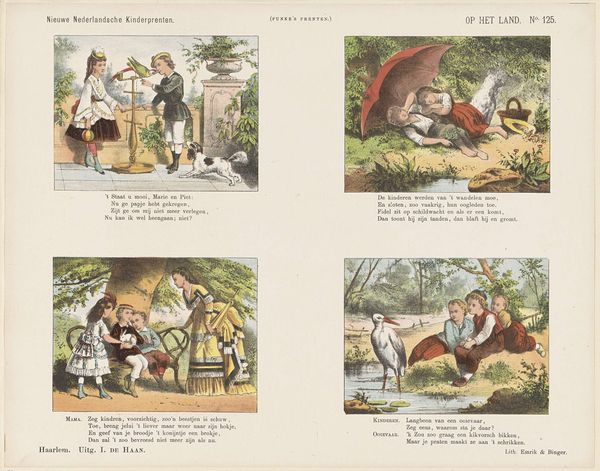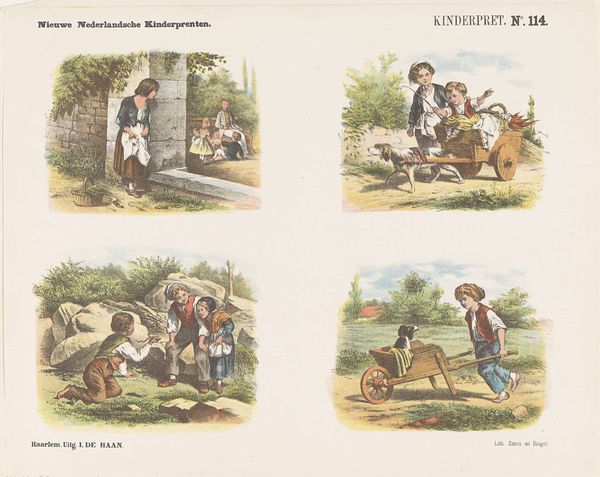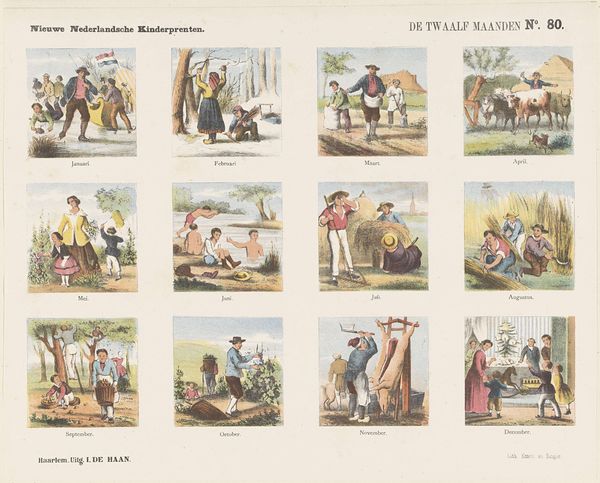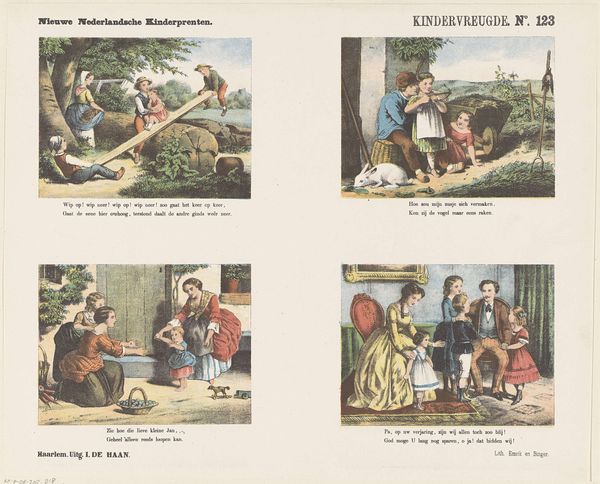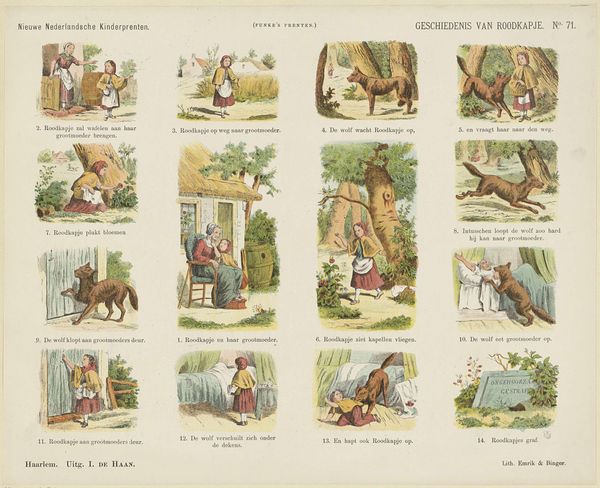
#
narrative-art
# print
#
child
#
genre-painting
Dimensions: height 341 mm, width 425 mm
Copyright: Rijks Museum: Open Domain
Curator: Looking at "De Kleine Savoyaard" by Jan de Haan, dating from 1875 to 1903, it’s fascinating how a simple print can open up broader social commentaries. What’s your initial impression? Editor: Well, at first glance, it feels like a series of somewhat disconnected vignettes showing this boy, supposedly from Savoy, in different situations. He seems to be travelling, maybe seeking work or just trying to survive. What strikes you the most about this work? Curator: The core narrative here touches upon themes of child labour, poverty, and displacement, issues deeply embedded in 19th-century European society. We see the boy in varied scenes - struggling with labor, facing potential exploitation and possible salvation through art. Consider how this work reflects the era’s debates about childhood innocence versus the harsh realities faced by many children. Does this shift your initial interpretation at all? Editor: Absolutely. I hadn't thought about it in terms of child labor so explicitly. The seemingly random scenes gain a sharper, more critical edge when viewed through that lens. But, does the "genre-painting" label normalize or perhaps even romanticize his hardship? Curator: That's an astute question. Does art of this type risk aestheticizing poverty, or can it act as a powerful tool for social awareness? Perhaps, this work prompts us to consider how our own perceptions are shaped by distance – both temporal and social. The tension is always present. Editor: So, by bringing contemporary theoretical perspectives, such as critical race studies or feminist theory, we can explore intersectional narratives of identity and socioeconomic injustice in a much more critical, profound manner. Curator: Exactly! Understanding art requires placing it within layers of context. Looking at this print reminds us that the aesthetic appreciation must go hand-in-hand with social and historical understanding. Editor: That's a lot to consider. I'll definitely approach this type of artwork differently moving forward.
Comments
No comments
Be the first to comment and join the conversation on the ultimate creative platform.
